 Operation and Maintenance
Operation and Maintenance
 Linux Operation and Maintenance
Linux Operation and Maintenance
 How to reset the remote password of a Linux cloud server
How to reset the remote password of a Linux cloud server
How to reset the remote password of a Linux cloud server
CentOS 8
Return to the directory
1. When the GRUB version selection interface appears, press the Esc key immediately. Otherwise, the system will continue to start and cannot proceed to the next step.
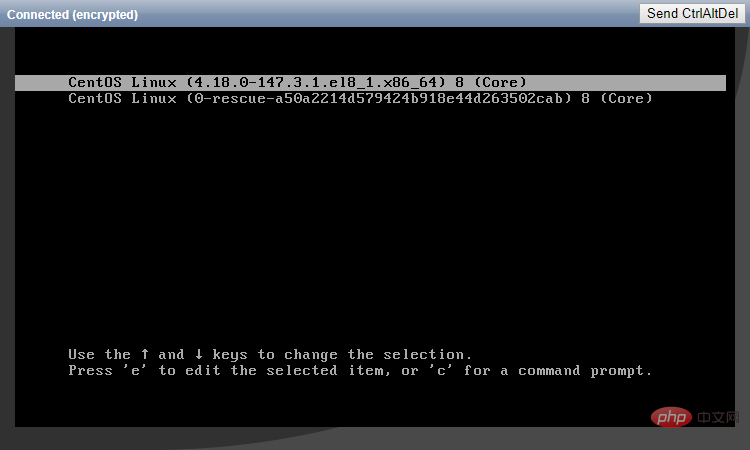
#2. Select the first kernel and press the e key to enter the editing interface.
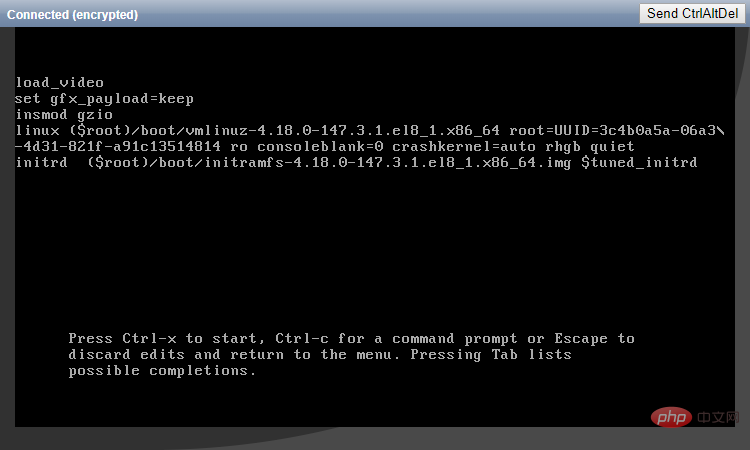
#3. Find the line where the first word is linux, and change ro in this line to rw init=/sysroot/bin/sh. Then press the Ctrl X key to start the system in single-user mode.
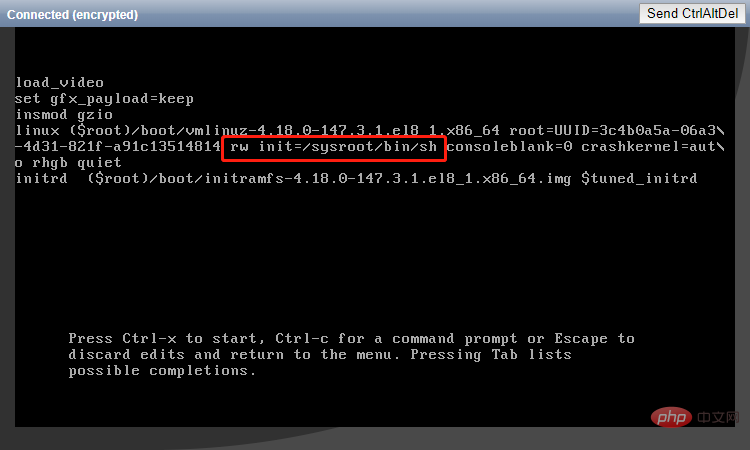
#4. After the system starts, enter chroot /sysroot to enter the system.
5. Use the passwd command to reset the password.

#6. Relabel the file system, then exit and restart the system.
touch /.autorelabel exit logout reboot
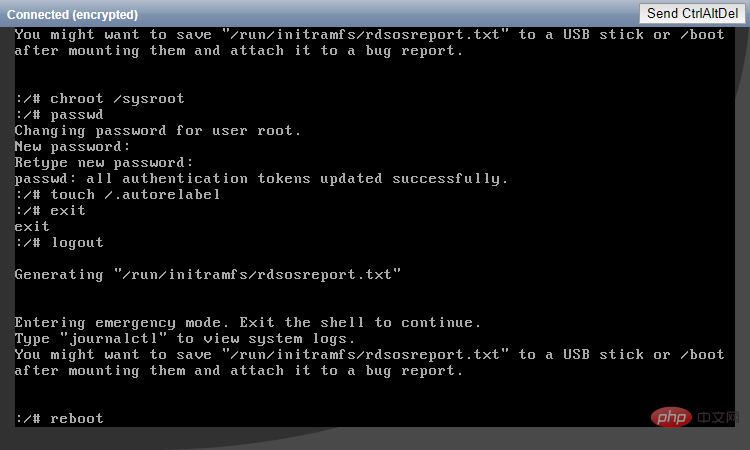
#7. After the system starts normally, you can successfully log in with the new password.
CentOS 7
Return to the directory
1. The first 5 steps are exactly the same as the steps for resetting the password on CentOS 8. Only the content of the kernel file is different.

#2. After resetting the password, enter reboot -f to force restart the system.
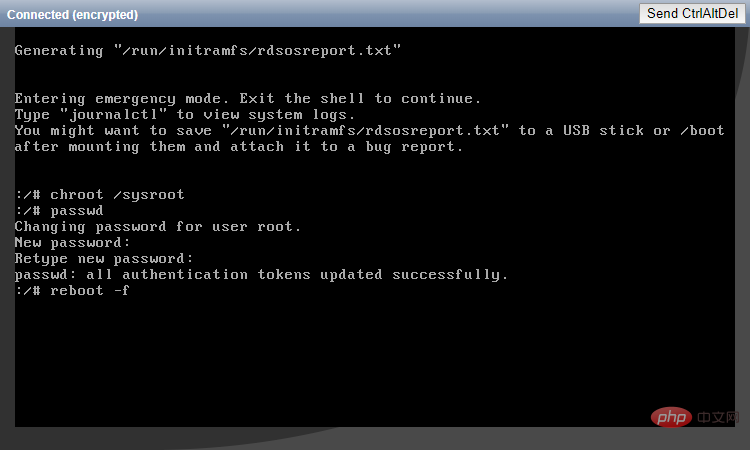
#3. After the system starts normally, you can successfully log in with the new password.
CentOS 6
Return to the directory
1. When the Booting CentOS... prompt appears, press any key immediately to enter the kernel selection interface. Otherwise, the system will continue to start and cannot proceed to the next step.
2. Select the first kernel and press the a key to prepare to modify the kernel parameters.
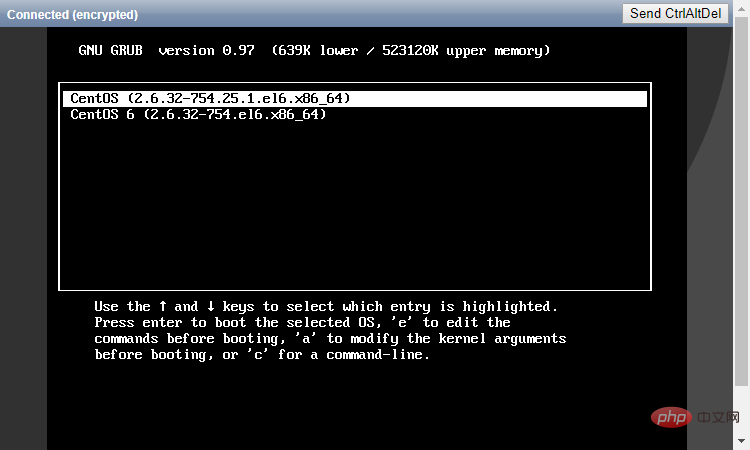
3. Enter the single character at the end of the line and press Enter.
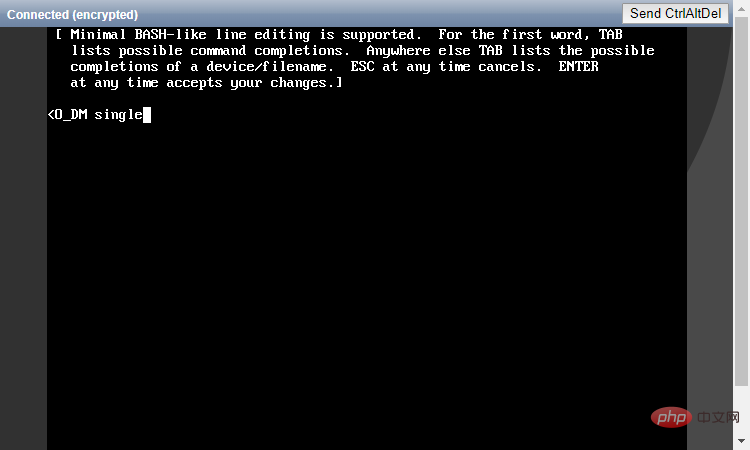
#4. After the system starts, use the passwd command to reset the password and restart.
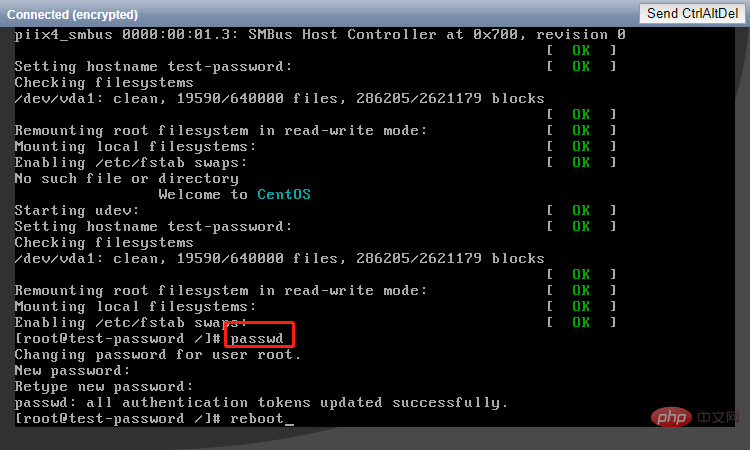
#5. After the system starts normally, you can successfully log in with the new password.
Ubuntu 19.04/Ubuntu 18.04
Return to directory
1. During the system startup process, press the Esc key immediately to enter the kernel selection interface. Otherwise, the system will continue to start and cannot proceed to the next step.
2. Select the first kernel and press the e key to enter the editing interface.
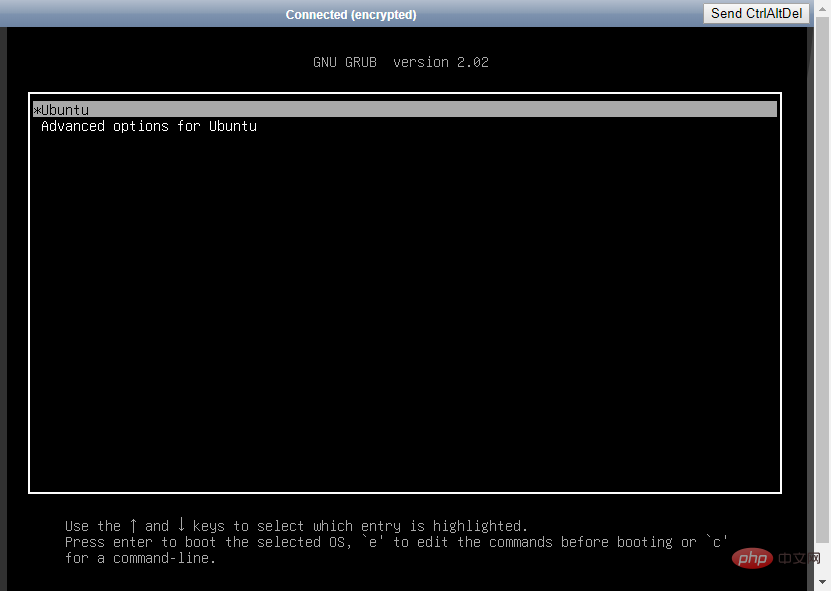
3. Find the line where the first word is linux and add init=/sysroot/bin/sh at the end. Then press the Ctrl X key to start the system in single-user mode.

#4. After the system starts, enter mount -o remount,rw / to remount the system.
5. Use the passwd command to reset the password and force a restart.

#6. After the system starts normally, you can successfully log in with the new password.
Debian 10/Debian 9
Return to directory
1. During system startup, press the Esc key immediately to enter the kernel selection interface. Otherwise, the system will continue to start and cannot proceed to the next step.
2. Select the first kernel and press the e key to enter the editing interface.
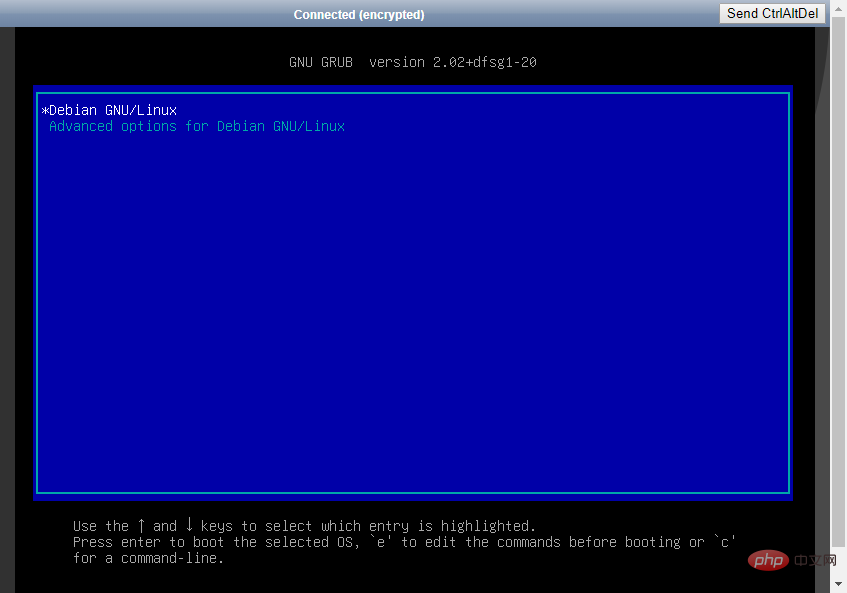
3. Find the line where the first word is linux and add init=/sysroot/bin/sh at the end. Then press the Ctrl X key to start the system in single-user mode.
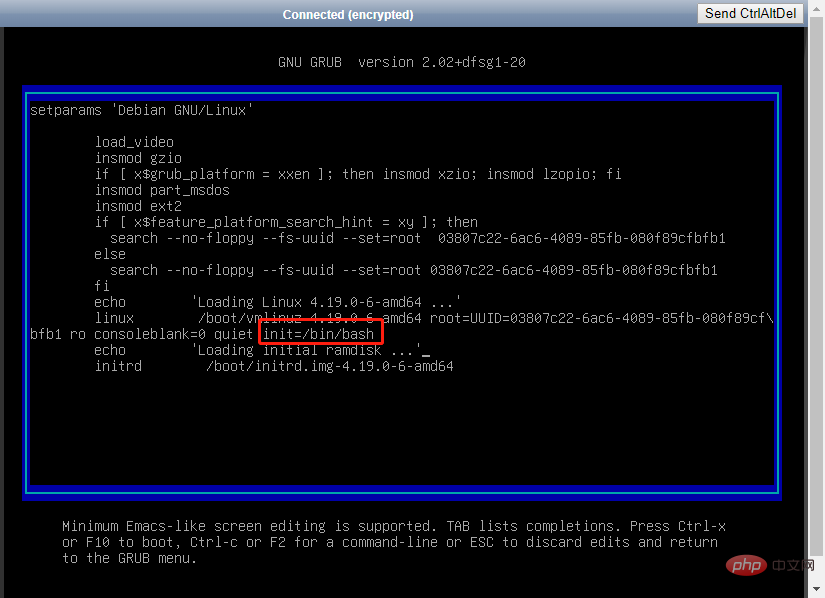
#4. After the system starts, enter mount -o remount,rw / to remount the system.
5. Use the passwd command to reset the password and force a restart.
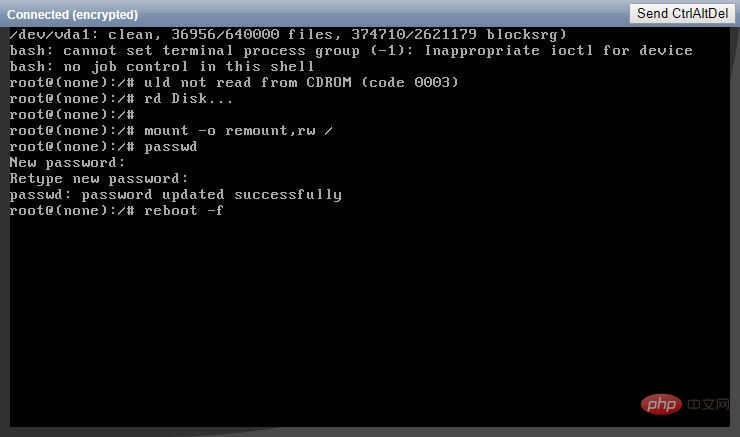
#6. After the system starts normally, you can successfully log in with the new password.
Fedora 31/Fedora 30/Fedora 29
Return to directory
1. When the GRUB version selection interface appears, press the Esc key immediately. Otherwise, the system will continue to start and cannot proceed to the next step.

2. Select the first kernel and press the e key to enter the editing interface.

#3. Find the line where the first word is linux, and change ro in this line to rw init=/sysroot/bin/sh. Then press the Ctrl X key to start the system in single-user mode.

#4. After the system starts, enter chroot /sysroot to enter the system.
5. Use the passwd command to reset the password.
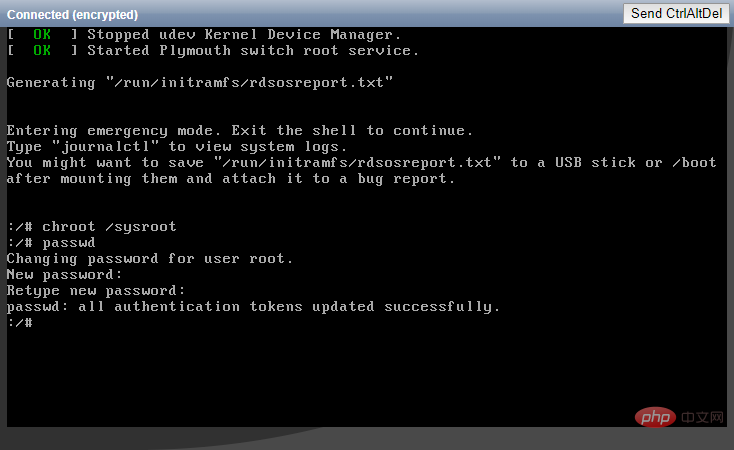
#6. Relabel the file system, then exit and restart the system.
touch /.autorelabel exit logout reboot

#7. After the system starts normally, you can successfully log in with the new password.
FreeBSD 12/FreeBSD 11/FreeBSD 10
Return to directory
1. When the system startup interface appears, press 2 to enter single-user mode.
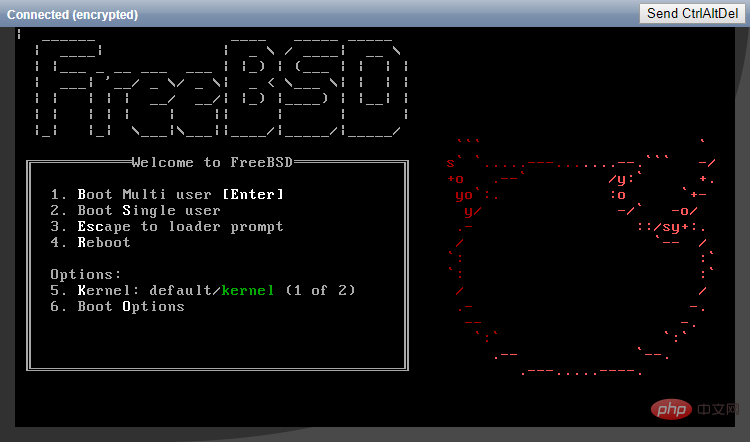
#2. Use the passwd command to reset the password and restart.
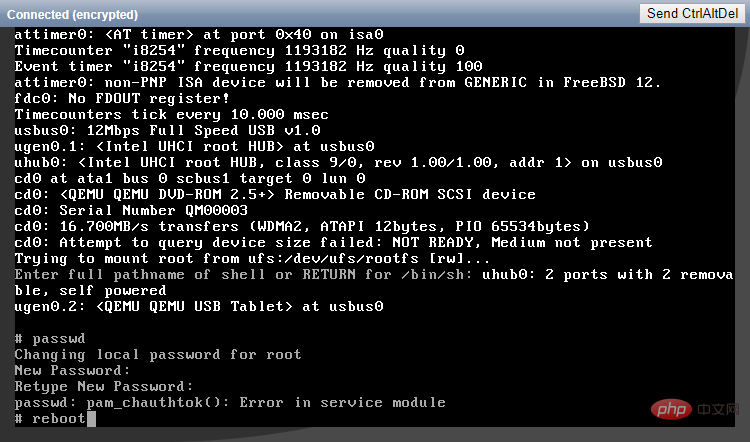
#3. After the system starts normally, you can successfully log in with the new password.
The above is the detailed content of How to reset the remote password of a Linux cloud server. For more information, please follow other related articles on the PHP Chinese website!

Hot AI Tools

Undress AI Tool
Undress images for free

Undresser.AI Undress
AI-powered app for creating realistic nude photos

AI Clothes Remover
Online AI tool for removing clothes from photos.

Clothoff.io
AI clothes remover

Video Face Swap
Swap faces in any video effortlessly with our completely free AI face swap tool!

Hot Article

Hot Tools

Notepad++7.3.1
Easy-to-use and free code editor

SublimeText3 Chinese version
Chinese version, very easy to use

Zend Studio 13.0.1
Powerful PHP integrated development environment

Dreamweaver CS6
Visual web development tools

SublimeText3 Mac version
God-level code editing software (SublimeText3)
 How to install software on Linux using the terminal?
Aug 02, 2025 pm 12:58 PM
How to install software on Linux using the terminal?
Aug 02, 2025 pm 12:58 PM
There are three main ways to install software on Linux: 1. Use a package manager, such as apt, dnf or pacman, and then execute the install command after updating the source, such as sudoaptininstallcurl; 2. For .deb or .rpm files, use dpkg or rpm commands to install, and repair dependencies when needed; 3. Use snap or flatpak to install applications across platforms, such as sudosnapinstall software name, which is suitable for users who are pursuing version updates. It is recommended to use the system's own package manager for better compatibility and performance.
 The Ultimate Guide to High-Performance Gaming on Linux
Aug 03, 2025 am 05:51 AM
The Ultimate Guide to High-Performance Gaming on Linux
Aug 03, 2025 am 05:51 AM
ChoosePop!_OS,Ubuntu,NobaraLinux,orArchLinuxforoptimalgamingperformancewithminimaloverhead.2.InstallofficialNVIDIAproprietarydriversforNVIDIAGPUs,ensureup-to-dateMesaandkernelversionsforAMDandIntelGPUs.3.EnabletheperformanceCPUgovernor,usealow-latenc
 What are the main pros and cons of Linux vs. Windows?
Aug 03, 2025 am 02:56 AM
What are the main pros and cons of Linux vs. Windows?
Aug 03, 2025 am 02:56 AM
Linux is suitable for old hardware, has high security and is customizable, but has weak software compatibility; Windows software is rich and easy to use, but has high resource utilization. 1. In terms of performance, Linux is lightweight and efficient, suitable for old devices; Windows has high hardware requirements. 2. In terms of software, Windows has wider compatibility, especially professional tools and games; Linux needs to use tools to run some software. 3. In terms of security, Linux permission management is stricter and updates are convenient; although Windows is protected, it is still vulnerable to attacks. 4. In terms of difficulty of use, the Linux learning curve is steep; Windows operation is intuitive. Choose according to requirements: choose Linux with performance and security, and choose Windows with compatibility and ease of use.
 Understanding RAID Configurations on a Linux Server
Aug 05, 2025 am 11:50 AM
Understanding RAID Configurations on a Linux Server
Aug 05, 2025 am 11:50 AM
RAIDimprovesstorageperformanceandreliabilityonLinuxserversthroughvariousconfigurations;RAID0offersspeedbutnoredundancy;RAID1providesmirroringforcriticaldatawith50�pacityloss;RAID5supportssingle-drivefailuretoleranceusingparityandrequiresatleastthre
 Linux how to enable and disable services at boot
Aug 08, 2025 am 10:23 AM
Linux how to enable and disable services at boot
Aug 08, 2025 am 10:23 AM
To manage the startup of Linux services, use the systemctl command. 1. Check the service status: systemctlstatus can check whether the service is running, enabled or disabled. 2. Enable the service startup: sudosystemctlenable, such as sudosystemctlenablenginx. If it is started at the same time, use sudosystemctlenable--nownginx. 3. Disable the service startup: sudosystemctldisable, such as sudosystemctldisablecups. If it is stopped at the same time, use sudosystemctldisabl
 Linux how to list all running processes
Aug 08, 2025 am 06:42 AM
Linux how to list all running processes
Aug 08, 2025 am 06:42 AM
Usepsauxforacompletesnapshotofallrunningprocesses,showingdetailedinformationlikeUSER,PID,CPU,andmemoryusage.2.Usetoporhtopforreal-timemonitoringofprocesseswithdynamicupdates,wherehtopoffersamoreintuitiveinterface.3.UsepgreporpidoftoquicklyfindthePIDs
 How to clean up your Linux system
Aug 22, 2025 am 07:42 AM
How to clean up your Linux system
Aug 22, 2025 am 07:42 AM
Removeunusedpackagesanddependencieswithsudoaptautoremove,cleanpackagecacheusingsudoaptcleanorautoclean,andremoveoldkernelsviasudoaptautoremove--purge.2.Clearsystemlogswithsudojournalctl--vacuum-time=7d,deletearchivedlogsin/var/log,andempty/tmpand/var
 Linux how to view the contents of a file
Aug 19, 2025 pm 06:44 PM
Linux how to view the contents of a file
Aug 19, 2025 pm 06:44 PM
ToviewfilecontentsinLinux,usedifferentcommandsbasedonyourneeds:1.Forsmallfiles,usecattodisplaytheentirecontentatonce,withcat-ntoshowlinenumbers.2.Forlargefiles,uselesstoscrollpagebypageorlinebyline,searchwith/search_term,andquitwithq.3.Usemoreforbasi






